I understand that Microchip has In-Circuit debuggers (ICD) which gives insight into a running PIC (or dsPIC for that matter) in real time. Then we have the ICE which goes a step ahead by replacing the microcontroller within the board and emulate it. The ICE gives full view of what would be happening inside the PIC had there been a real microcontroller on that board there.
Microchip also has something called the PICKit. It can be used to program a PIC. Can it also be used to replace the ICD? I am specifically referring to PICKit 3.
For Easy PIC PRO v7 here is a section for "Programming with ICD2/ICD3". Can the PICKit be used instead or shall I have to buy an ICD?
